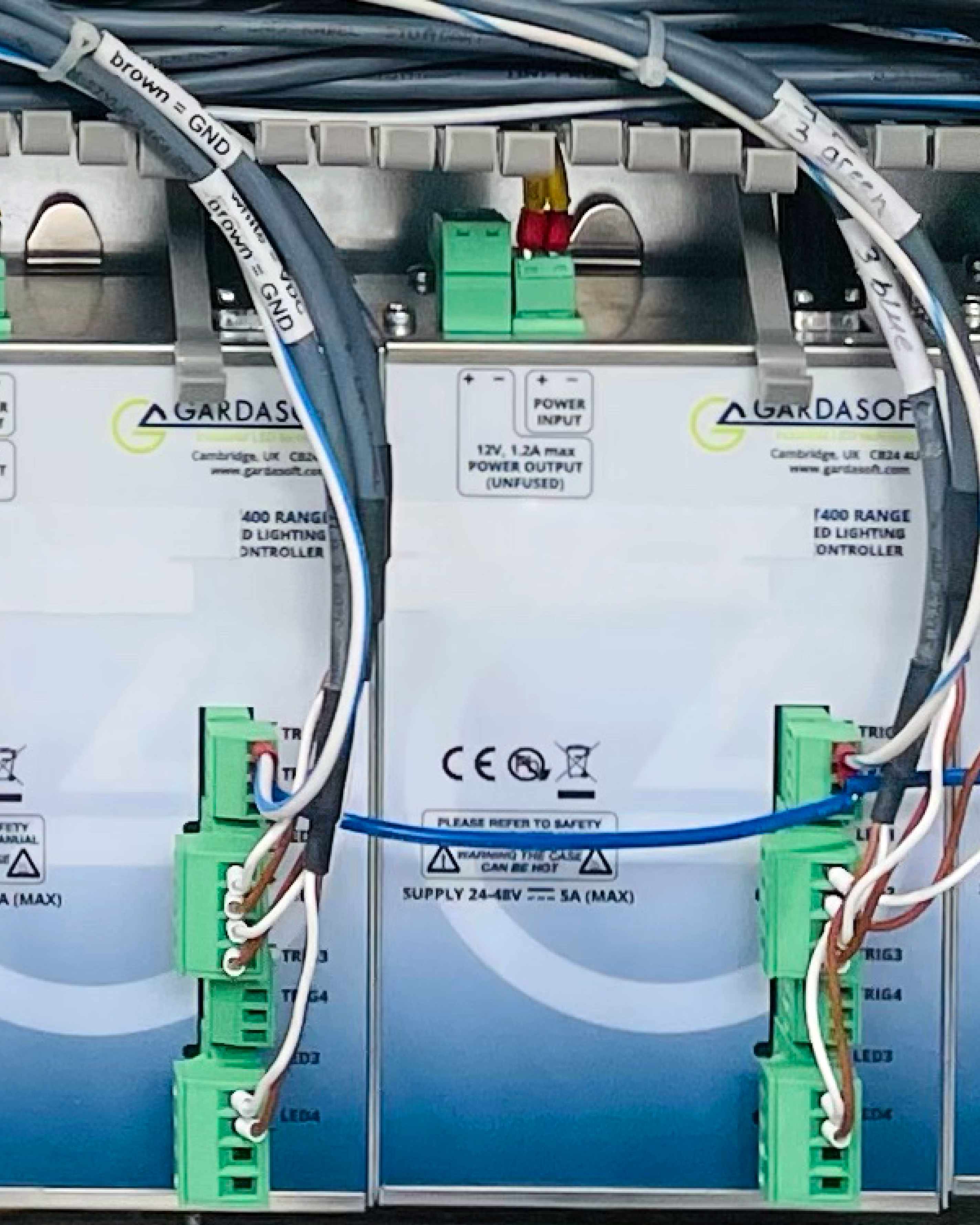
Practice
Planning and realization of applications
How to avoid interference
In practical everyday life, there are many influencing parameters in your production environment, which may complicate the image processing. As a typical result a lot of adjustments are needed within the application, the discard is increased or the service life of components is drastically reduced.
Typical interference for machine vision systems are:

Problems with vibrations
Phenomenon:
- Vibrations of machine parts, illumination or camera system can lead to blurred images. This results in blurred edges in the picture and will have a negative effect on the precision of measurement applications or completely prevent finding the edges.
- Permanent vibrations can destroy electronics, especially your camera system.
Possible solution:
- Slight smear effects can possibly be reduced by means of a shorter exposure time, but cannot completely be avoided. Stronger vibrations must be avoided by all means.
- Vibration bumpers can avoid the response of a system. They should protect the whole system from vibration, decoupling only the camera system is not sufficient, as the inspection system would swing over inspected parts.
- The measurement results can be improved by a repeated inspection of the part and subsequent averaging.
Problems with dirt, such as water, dust, smoke, fog and debris
Phenomenon:
- Water on the lens, vapours and mists, but also dust and dirt but disturb the optical path by scattering, reflection and absorption. The correct imaging is no longer guaranteed.
- Moisture, dirt and corrosive volatile substances in unprotected test cells can possibly cause the destruction of the components.
Possible solution:
- The use of appropriate protective camera housings will keep the camera lens clean. The enclosure should be chosen according to the needed IP protection classes.
- If not a completely closed camera housing can be employed, a semi-open variant can possibly be used which is flushed from the rear with compressed air. Any floating particles will be forced away from the system. When using compressed air, please do not use any oily compressor air but put in air filters ahead, too.
- A similar method is the use of an air curtain. An air nozzle mounted at angles in front of the camera also keeps away any dirt.
- Another technique of keeping the lens clean is a transparent roll film which is conveyed by a motor in case of pollution.
- A backlight can also be kept clean in different ways. A skewed additional cover plate could simply make any fragments slip off, any dust on the illuminated field could be blown away using compressed air or linear brush unit.
Problems with heat
Phenomenon:
- These disturbances can lead to more image noise, higher temperatures reduce the service life of the system and will damage it.
Possible solution:
- Increase the working distance from the heat source and use a larger optical focal length.
- Use an air-cooled or water-cooled camera housing to keep the inside temperature low and save the system. Caution: Using excessive cooling will cause water condensation!
- Using a longer endoscope or a heat-resistant fibre optic system makes it possible to position the camera further away. In extreme cases a distance of several meters can be realised.
- Heat-absorbing or reflective filters and glasses can block heat and keep it away from the camera system.
Problems with electromagnetic interference
Phenomenon:
- These disturbances can result in faulty communication, such as false triggering, a break-down of image data transmission or a general failure of the camera.
Possible solution:
- Increase the working distance from the source of interference (such as an inductive welding station) using a larger optical focal length.
- Provide a shielding for the camera housing or use high-quality shielded video and data cable to keep out any electromagnetic radiation.
- Weak and impaired signals, such as camera trigger, strobe and timing signals, could be denoised and re-amplified using signal conditioners.
- When using fibre optics for signal transmission, images and data can be transferred over very long distances.
Problems with brightness variations
Phenomenon:
- The camera image appears sometimes brighter, sometimes darker. The software evaluation is faulty.
Possible solution:
- Compensate daylight variations.
- The illumination of the system should always be toggled by the camera and not by the PLC in order to avoid exposure of the CCD sensor before or after image acquisition, which can cause static charge.
- A camera which did not capture images over a longer period can also have static charge on the CCD sensor. The first image is brighter for this reason. When (re)starting the machine, take some pictures in advance!
- The use of stabilised power supply units, or better: a flash controller for LED illumination maintains the current constant. Heating of the LED lighting leads to lower brightness. Dissipate heat!
Need Help ?
Vision-Doctor.com is a private, independent, non-commercial homepage project and not a technology provider or system integrator. Suitable technologies and further professional support can be obtained from the companies & partners listed below.
For a quick recommendation, appropriate advice and brief information, please do not hesitate to contact me.















